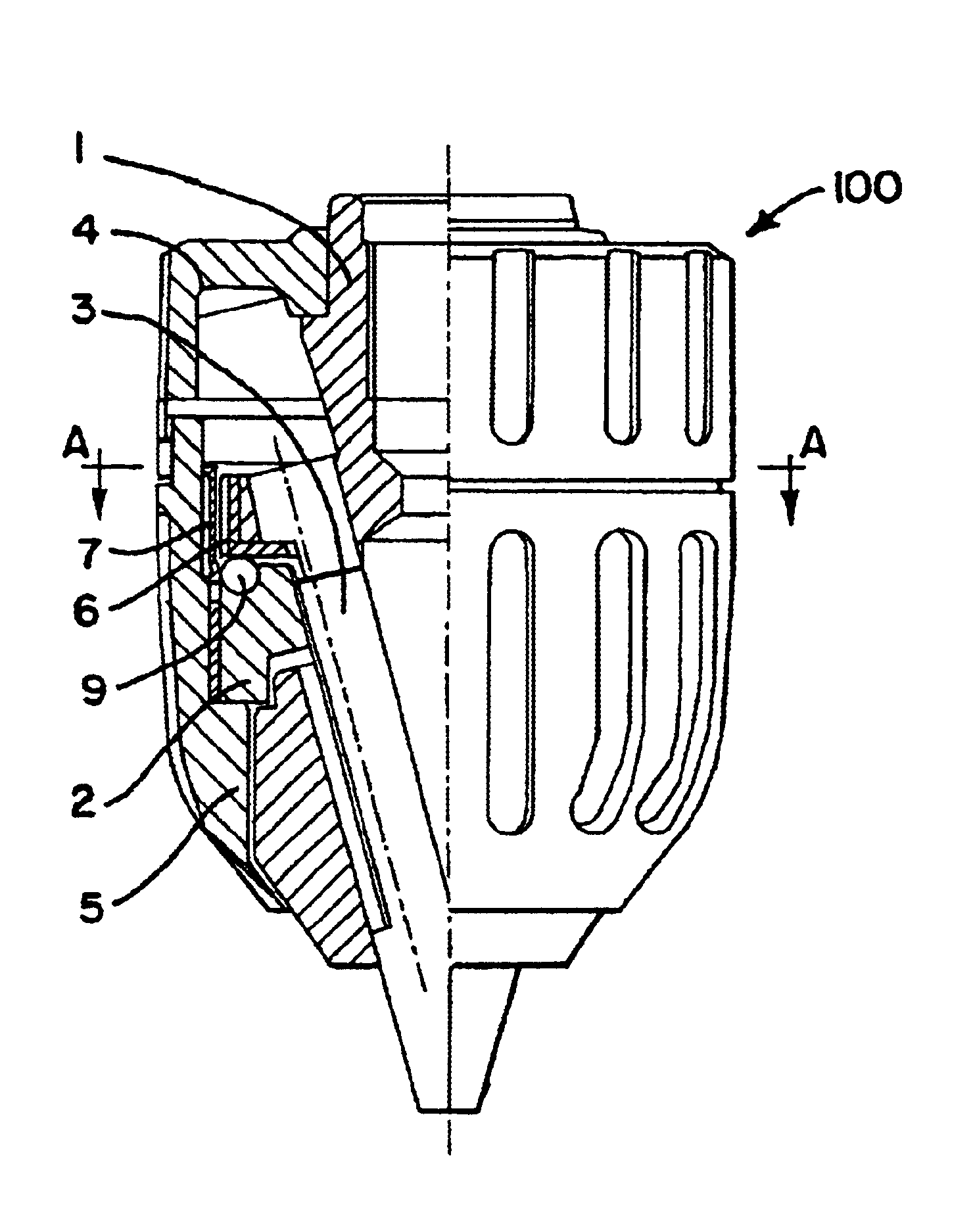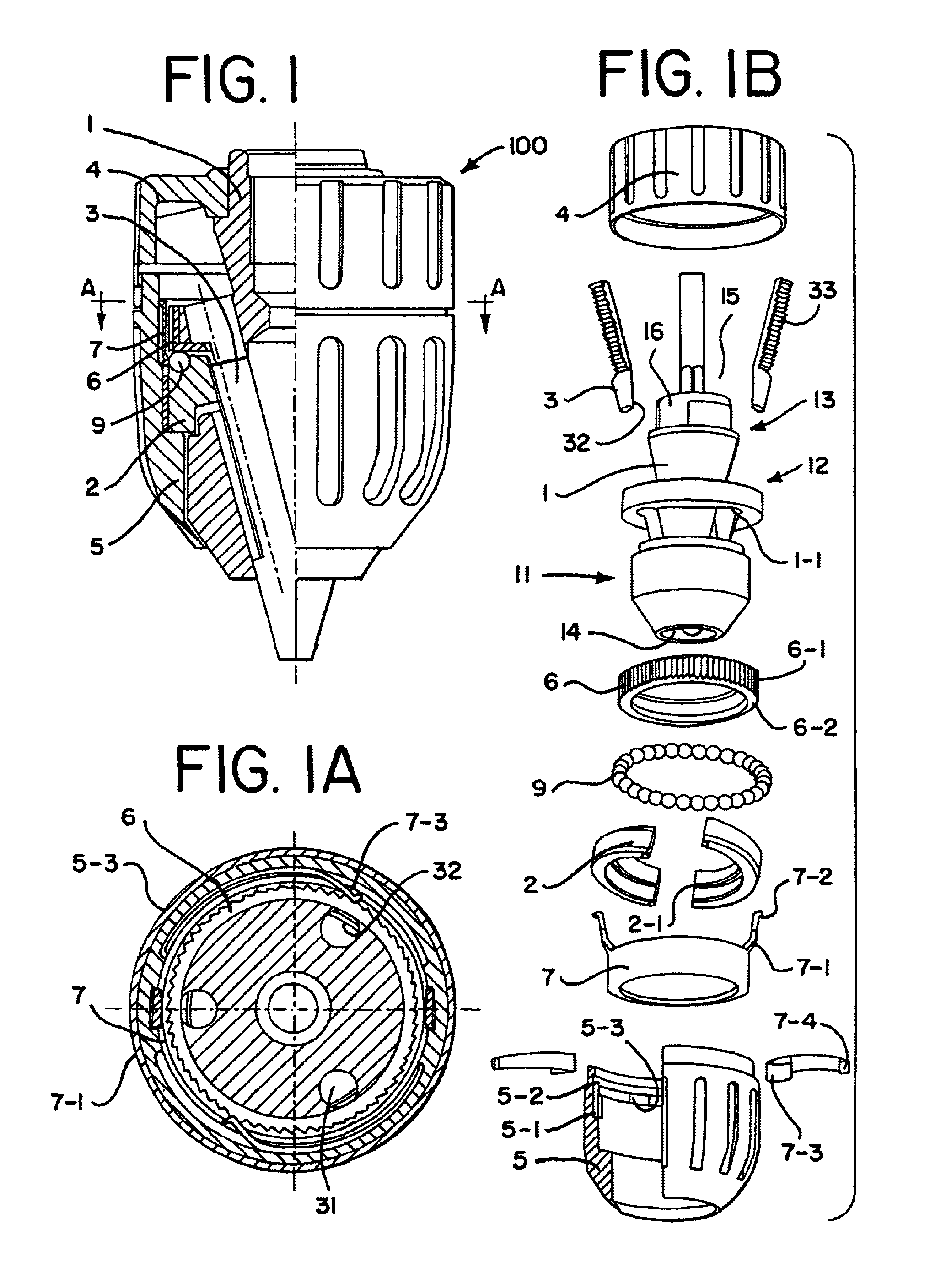Hammerlock chuck
a hammerlock and chuck technology, applied in the field of chucks, can solve the problems of increasing the cost and complexity of the chuck, causing the chuck to loosen the grip around the tool shaft, and undesirable consequences
- Summary
- Abstract
- Description
- Claims
- Application Information
AI Technical Summary
Benefits of technology
Problems solved by technology
Method used
Image
Examples
Embodiment Construction
Turning now to FIG. 1, a hammerlock chuck in accordance with the present invention is illustrated. Hammerlock chuck 100 includes a front sleeve 5, an optional rear sleeve 4, a body 1, and a plurality of jaws 3. The body 1 is generally cylindrical in shape and includes a nose or forward section 11, a middle section 12, and a tail or rearward section 13. An axial bore 14 is formed in the nose section 11 of the body 1. The axial bore 14 is somewhat larger than the largest tool shank that the chuck is designed to accommodate.
A threaded bore may be formed in the tail section to mate with the drive shaft of a powered or hand driver (not shown). While a threaded bore may be used, the threaded bore could be replaced with a tapered bore or other suitable shape to mate with a drive shaft. The threaded bore and the axial bore may communicate at the middle section 12 of the body 1. The tail section 13 of the body 1 can include a rear portion 15 with a shaped surface 16 to mate and receive the o...
PUM
 Login to View More
Login to View More Abstract
Description
Claims
Application Information
 Login to View More
Login to View More - R&D
- Intellectual Property
- Life Sciences
- Materials
- Tech Scout
- Unparalleled Data Quality
- Higher Quality Content
- 60% Fewer Hallucinations
Browse by: Latest US Patents, China's latest patents, Technical Efficacy Thesaurus, Application Domain, Technology Topic, Popular Technical Reports.
© 2025 PatSnap. All rights reserved.Legal|Privacy policy|Modern Slavery Act Transparency Statement|Sitemap|About US| Contact US: help@patsnap.com



